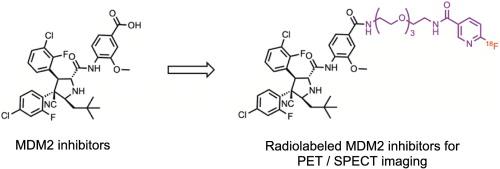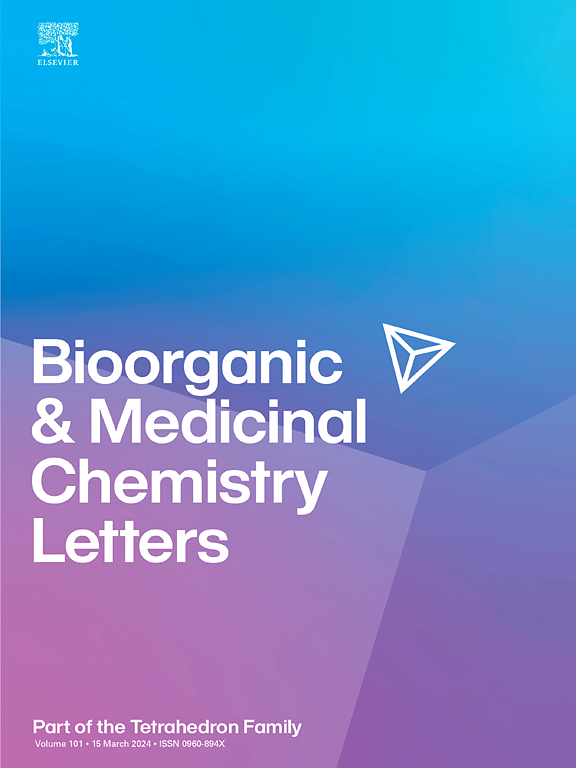A concise review on MDM2 inhibitors and recent progress in radiopharmaceutical development for imaging MDM2 expression in tumors with PET or SPECT
IF 2.2
4区 医学
Q3 CHEMISTRY, MEDICINAL
引用次数: 0
Abstract
Murine double minute 2 (MDM2, also known as human double minute 2 or HDM2) is a negative regulator of the tumor suppressor protein p53 and is overexpressed in many cancers. Over the past two decades, substantial progress has been made in developing inhibitors of the MDM2-p53 interaction, thereby allowing the p53 protein to exert antitumor effects through cell apoptosis and cycle arrest. While there are currently no FDA-approved MDM2 inhibitors available, several small molecule MDM2 inhibitors and a stapled peptide inhibitor of the MDM2-p53 interaction are in clinical development. Availability of these clinical candidates, representing a diverse array of chemical scaffolds that bind to the same p53 binding site on the MDM2 protein with low nanomolar inhibition potency (IC50), presents a significant opportunity for developing molecular imaging probes for MDM2 in parallel. This review summarizes the MDM2 inhibitors that have been evaluated in clinical trials, which could serve as starting leads for imaging probe development, and recent progress in developing radiotracers for MDM2 and for evaluating MDM2 expression levels in tumors noninvasively using the highly sensitive, molecular imaging techniques positron emission tomography (PET) or single-photon emission computed tomography (SPECT).

简要综述了MDM2抑制剂的研究进展,以及利用PET或SPECT对肿瘤中MDM2表达进行成像的放射性药物研究进展。
小鼠双分钟2 (MDM2,也称为人类双分钟2或HDM2)是肿瘤抑制蛋白p53的负调节因子,在许多癌症中过度表达。在过去的二十年中,在开发MDM2-p53相互作用抑制剂方面取得了实质性进展,从而使p53蛋白通过细胞凋亡和周期阻滞发挥抗肿瘤作用。虽然目前还没有fda批准的MDM2抑制剂,但一些小分子MDM2抑制剂和MDM2-p53相互作用的钉状肽抑制剂正在临床开发中。这些临床候选药物的可用性,代表了与MDM2蛋白上相同p53结合位点结合的多种化学支架,具有低纳摩尔抑制力(IC50),为并行开发MDM2分子成像探针提供了重要机会。本文综述了在临床试验中评估的MDM2抑制剂,这些抑制剂可以作为成像探针开发的起点,以及MDM2放射性示踪剂的开发以及利用高灵敏度分子成像技术正电子发射断层扫描(PET)或单光子发射计算机断层扫描(SPECT)非侵入性评估MDM2在肿瘤中的表达水平的最新进展。
本文章由计算机程序翻译,如有差异,请以英文原文为准。
求助全文
约1分钟内获得全文
求助全文
来源期刊
CiteScore
5.70
自引率
3.70%
发文量
463
审稿时长
27 days
期刊介绍:
Bioorganic & Medicinal Chemistry Letters presents preliminary experimental or theoretical research results of outstanding significance and timeliness on all aspects of science at the interface of chemistry and biology and on major advances in drug design and development. The journal publishes articles in the form of communications reporting experimental or theoretical results of special interest, and strives to provide maximum dissemination to a large, international audience.

 求助内容:
求助内容: 应助结果提醒方式:
应助结果提醒方式:


